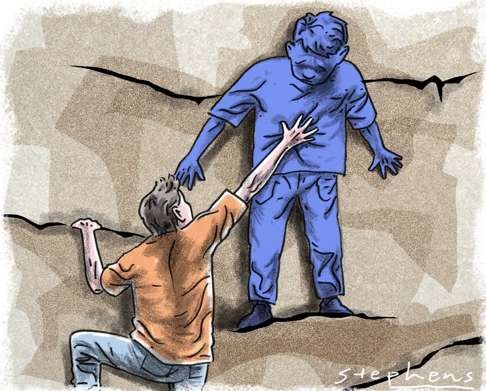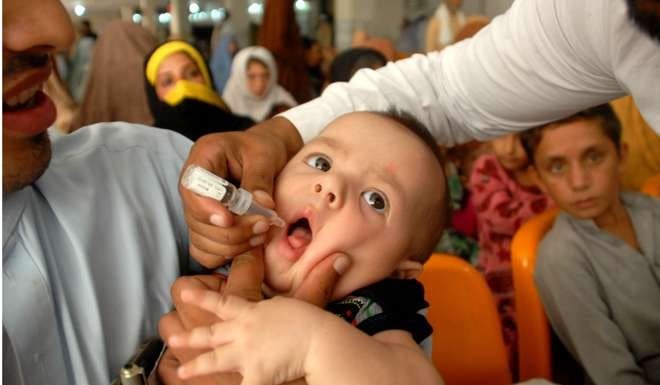
The world should aim high, and seek to eliminate suicide
David Covington and Paul Yip say the successful eradication of smallpox and other ambitious health care goals should inspire us to do more to stop people killing themselves

Caldwell wanted to free climb El Capitan’s Dawn Wall, a steep rock face in Yosemite National Park with extreme pitches and hardly any vertical cracks (which climbers wedge hands and feet into, to help them ascend). Collins wasn’t sure how to respond at the time, replying only that it’s not a Big Hairy Audacious Goal if we know the outcome with certainty.
In January 2015, Caldwell and his partner, Kevin Jorgeson, completed the ascent. It took 19 days for the pair to reach the summit, but after seven years of mapping, planning and preparing, and five prior failed attempts, they achieved their Big Hairy Audacious Goal. Caldwell attributed his success to “optimism, perseverance, dedication and the importance of dreaming big”.
Pair reach top of El Capitan, after epic 19-day climb up 900m rock face
Collins shared this story last year at a health care conference in the United States, rallying health care leaders to action in a similar way: identify a Big Hairy Audacious Goal as massive and seemingly unattainable as the Dawn Wall. These leaders were urged to think about the pioneers who overcame their “Dawn Walls” in health care. Three examples stand out: smallpox, polio andHIV.
In 1959, the 12th World Health Assembly adopted a goal to eradicate smallpox, a rampant disease with an estimated 50 million cases per year in the early part of that decade. Despite the challenge, a group of doctors and scientists persevered. By 1967, the World Health Organisation was leading an international effort at eradication. The last naturally occurring case happened in 1977, and in 1980, the World Health Assembly declared “smallpox is dead”. To use the climbing analogy, they reached the summit of the Dawn Wall.

Polio could be wiped out permanently within 12 months, insists World Health Organisation
As for polio, for which an effective vaccine has been available since the 1960s, as recently as 1979, there were still an estimated 400,000 new cases a year. In 1988, eradicating polio became a global effort, and the WHO began tracking polio-endemic countries. In 1994, the Americas were declared polio-free and one after another, other countries soon followed. Today, polio remains endemic in only three countries; and we are close to full eradication. In climbing terms, the individuals targeting polio are on the Dawn Wall, near the top. Almost there.
Meanwhile, the fight against HIV is under way. A meeting of UN member states in 2011 advanced 10 target milestones to eliminate the virus. In the early years of the Aids and HIV epidemic, the disease was “unknown and misunderstood, feared, untreatable and often fatal”. But progress is happening. Deaths reached their peak in 2005, and the WHO expects mortality to have declined by 25 per cent by this year. Efforts continue to focus on expanding access to antiretroviral therapy and reducing the incidence of infection. The teams with this goal are at the base of the rock wall, but steadily climbing.

Headaches, trembling hands, poor sleep, feeling worthless: Hong Kong’s middle-class mental health crisis
In Hong Kong, we have seen the programmes for zero accidents in the construction industry, zero infections of HIV/Aids for the next generation, and so on. We are dreaming of the summit, owning the goal and measuring our progress; we are learning about what works, and slowly climbing the wall.
When at first identified, any Big Hairy Audacious Goal can seem impossible. As we write this at the end of suicide prevention month in the US in September, and with mental health month in many parts of the world, including Hong Kong, coming upon us in October, it seems the right time to embrace another seemingly impossible goal: eliminate deaths by suicide.
In our study of the recent suicides among students in Hong Kong, we have found that the causes of suicide are indeed very complicated
Work has already begun. Last year, the WHO produced the report, “Preventing Suicide: A Global Imperative”. The National Action Alliance for Suicide Prevention in the US has created a prioritised research agenda, while many groups in the US, the UK, the Netherlands and New Zealand are inspired by the work of the Henry Ford health system and are attempting to replicate its efforts. These are important first steps.
One year ago, a diverse group of peer leaders, government policymakers and health care providers from a dozen countries gathered in Atlanta in the US to try to find some answers. The result is a “Zero Suicide” international declaration that hopes eventually to eliminate suicide.
To make progress, we must better focus our efforts. Past research has spent more time describing suicide than actually attempting to prevent it. And 15 years ago, professionals in the field successfully, albeit erroneously, argued that suicide was not a health or behavioural health issue. They kept suicide out of the Diagnostic and Statistical Manual of Mental Disorders, a widely accepted classification of mental disorders. According to them, “suicide is, by definition, not a disease, but a death that is caused by a self-inflicted intentional action or behaviour”.
Change is afoot. The latest edition of the manual, adopted last October, highlights a stronger recognition of suicide related to diseases like schizophrenia, bipolar disorder and major depression. It also proposes for consideration suicide behaviour disorder, which could be applicable to those who may not have been diagnosed with a separate mental health condition.

For young Hongkongers battling mental health issues, support exists but hurdles remain
Past research also did not include input from people with personal experience. In the case of smallpox or polio, we would likely say that someone “succumbed” and died. Regarding suicide, many experts continue to insist upon using the language of personal “choice”. This does not fit with the unbearable emotional and psychic anguish and pain that those who contemplate suicide experience and describe. Sometimes, the coroner’s court would not ask for a detailed investigation of the cases. However, we would miss an opportunity to learn of the tragedy and prevent future deaths.
In our study of the recent suicides among students in Hong Kong, we have found that the causes of suicide are indeed very complicated. But, certainly in most cases, death was not inevitable. The suicide notes we have analysed showed a strong affection towards loved ones and convey a strong feeling of remorse towards parents and friends. By not accepting suicide as it is, taking ownership of the issue and discharging our duties and exercising our leadership, we see hope in mitigating the problem. We can all be part of the change.
We aim to continue the climb, with the intent to spark a global effort to reach the top. We hope to inspire health care and mental health leaders to take on this challenge, like they have many other indomitable foes. Ending suicide is a Big Hairy Audacious Goal, but without that, we would remain at the base of the mountain, forever looking up, but never making progress.
David Covington is the CEO of Recovery Innovations. Paul Yip is director of suicide research and prevention at the University of Hong Kong

